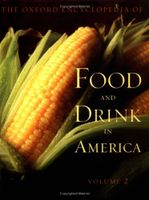Advertisement
Oysters
Published 2004
A subject of still-life paintings, a source for metaphors and lyrics, and a legendary aphrodisiac, the oyster is scientifically an edible bivalve mollusk. Ostrea and Crassostrea are the main genera of the edible oyster, and within both groups there are at least fifty species, each with hundreds of varieties specific to the bays, coves, and estuaries where they grow. Ostrea edulis is the flat, smooth, European oyster commonly called Belon, which is now cultivated on both the Atlantic and Pacific coasts of the United States. Ostrea lurida, or the Olympia oyster, is indigenous to the waters of the Pacific Northwest. Crassostrea virginica, sometimes called the American oyster, is native to the waters of the U.S. Atlantic and Gulf coasts. Crassostrea gigas is indigenous to Japan, but since the early 1900s it has been highly cultivated along the Pacific coast from San Francisco to British Columbia. Such familiar commercial names as Lynnhavens, Blue Points, Cotuits, Wellfleets, Chincoteagues, Tomales Bays, and Apalachicolas derive from the waters where the adult oysters are harvested.


